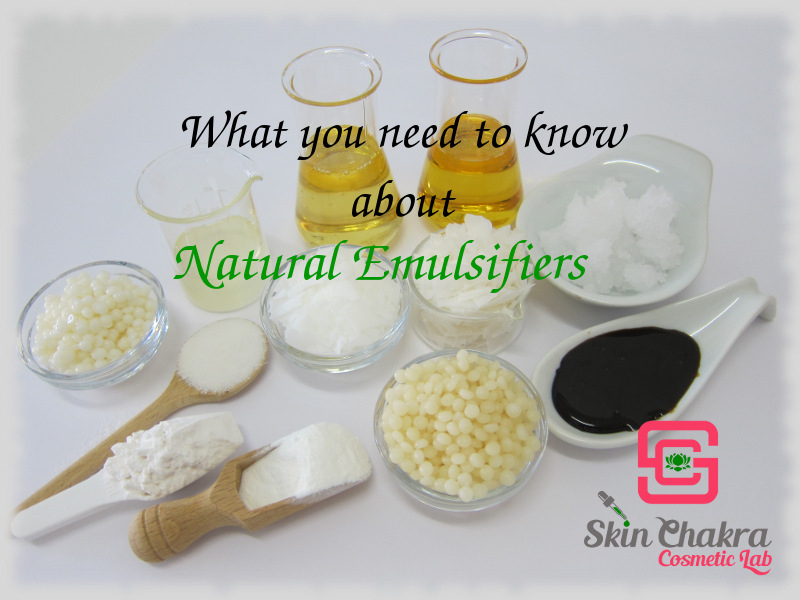Evolution of emulsifiers in food and cosmetic industries
The Scientific research Behind Emulsifiers and Their Value in Everyday Products
Emulsifiers are important elements that make it possible for the blending of oil and water, two normally immiscible materials. Their unique molecular structure enables them to decrease surface stress, developing steady emulsions in various items. This function is crucial for preserving the desired structure and high quality in food, cosmetics, and pharmaceuticals. emulsifiers. As the demand for cutting-edge formulas grows, recognizing the scientific research behind emulsifiers ends up being progressively important. What effects might this have for future product development?

What Are Emulsifiers?
Emulsifiers are materials that enable the blending of 2 immiscible liquids, such as oil and water, creating a stable blend understood as an emulsion. These representatives play a vital duty in various markets, consisting of food, cosmetics, and pharmaceuticals. Emulsifiers have unique molecular frameworks, typically featuring both hydrophilic (water-attracting) and hydrophobic (water-repelling) parts. This double nature permits them to interact with both kinds of liquids, assisting in the formation of solutions and preventing separation.
Usual examples of emulsifiers consist of lecithin, frequently found in egg yolks, and mono- and diglycerides, which are often made use of in baked products. In food products, emulsifiers improve structure and uniformity, enhancing total quality. In cosmetics, they assist in creating secure creams and lotions. The versatility of emulsifiers makes them necessary in creating a vast array of day-to-day items, ensuring that various ingredients blend flawlessly for ideal performance and consumer complete satisfaction.
Just How Do Emulsifiers Function?
Just how do emulsifiers develop steady blends from 2 usually unmixable liquids? Emulsifiers work by decreasing the surface tension in between oil and water, which are naturally inappropriate because of their molecular structures. They possess both hydrophilic (water-attracting) and hydrophobic (water-repelling) residential properties, enabling them to communicate with both phases. When an emulsifier is presented to a combination of oil and water, its particles position themselves at the interface, with the hydrophilic end in the water and the hydrophobic end in the oil. This arrangement maintains the solution by avoiding the oil droplets from dividing and coalescing from the water stage. The outcome is an uniform combination, recognized as an emulsion, which can be either oil-in-water or water-in-oil, depending on the primary phase. As a result, emulsifiers play an important duty in different products, making certain uniformity and stability in formulations varying from food products to cosmetics.
Types of Emulsifiers in Food Products
In the domain name of food production, numerous kinds of emulsifiers are employed to improve texture, security, and general top quality. These emulsifiers can be categorized primarily right into synthetic and all-natural types. All-natural emulsifiers, such as lecithin, originated from soybeans or egg yolks, are frequently used in items like mayo and chocolates. They are preferred for their clean tag appeal and useful benefits.
Artificial emulsifiers, like mono- and diglycerides, are typically utilized in refined foods for their cost-effectiveness and flexibility. These substances help preserve the desired consistency in items such as margarine and salad dressings. Additionally, polysorbates, one more category of synthetic emulsifiers, boost the stability of solutions in gelato and sauces. Each sort of emulsifier plays a vital role in making sure the preferred sensory features and shelf-life of food products, eventually boosting the consumer experience.
The Function of Emulsifiers in Cosmetics
While the key function of emulsifiers in cosmetics is to blend oil and water-based active ingredients, their effect prolongs past mere stabilization. Emulsifiers serve as crucial components that improve the texture and consistency of items such as lotions, lotions, and lotions. By developing a stable mixture, they enable for uniform distribution of active ingredients, making certain that consumers receive the designated benefits of the formula.
Moreover, emulsifiers add to the sensory experience of aesthetic items. They can influence the feel and absorption of a product on the skin, offering a smoother application and a more appealing finish. Additionally, emulsifiers contribute in extending the service life of cosmetics by protecting against the splitting up of active ingredients, therefore keeping item stability gradually. This stabilization is important for customer security and effectiveness, making emulsifiers vital in the formula of top quality cosmetic products.
Advantages of Making Use Of Emulsifiers
Emulsifiers offer countless benefits that expand beyond their fundamental function in cosmetics. These materials boost the security and structure of different products, guaranteeing an uniform consistency that is visually attractive and functionally reliable. In food, emulsifiers add to improved mouthfeel and prolong rack life by stopping splitting up of active ingredients, which is vital for keeping high quality and safety. Additionally, emulsifiers can facilitate the absorption of nutrients in dietary formulations, enhancing their wellness advantages.
In the pharmaceutical market, emulsifiers play a basic role in drug delivery systems, boosting the bioavailability of energetic ingredients. They likewise aid in formulating individual treatment items, making sure that active ingredients are evenly dispersed for optimum efficacy. In general, the incorporation of emulsifiers greatly improves item efficiency across diverse applications, making them indispensable in day-to-day items. Their multifunctional nature try this web-site underscores their importance in boosting both customer experience and item long life.
Typical Emulsifiers and Their Resources

On the other hand, synthetic emulsifiers like mono- and diglycerides are originated from glycerol and fats. These emulsifiers are commonly utilized in refined foods for their performance and cost-efficiency. Polysorbates, an additional synthetic choice, are extensively employed in different applications, consisting of cosmetics and pharmaceuticals. Each kind of emulsifier serves certain useful functions, guaranteeing stability and uniformity in the formulations of everyday products.
Future Fads in Emulsifier R & D

In addition, developments in biotechnology are leading the method for the growth of tailored emulsifiers that boost stability and appearance while reducing ecological impact. This pattern is complemented by a growing interest being used waste products from food production as prospective emulsifier resources, thereby advertising a circular economic climate.
Consumer find out here recognition regarding health and health is driving the demand for emulsifiers that sustain nutritional profiles, such as those that can provide functional benefits. As these fads develop, the future of emulsifier research study will likely stress both sustainability and capability, dealing with the changing demands of consumers and markets alike
Often Asked Concerns
Are Emulsifiers Safe for Intake in Food Products?
Emulsifiers are usually considered safe for consumption in foodstuff. Regulatory agencies evaluate their use, ensuring they meet security requirements. Nevertheless, private level of sensitivities might differ, calling for care for those with certain nutritional limitations or allergic reactions.
Can Emulsifiers Reason Allergies in Some Individuals?

Exactly How Do Emulsifiers Impact the Rack Life of Products?
Emulsifiers enhance product stability by protecting against separation of components, which can lengthen life span. Their capacity to maintain uniformity helps protect appearances and tastes, inevitably contributing to the longevity of various food and cosmetic products.
Exist All-natural Alternatives to Artificial Emulsifiers?
All-natural choices to artificial emulsifiers consist of components like lecithin, guar periodontal, and xanthan periodontal. These substances can efficiently stabilize mixtures, providing options for those seeking to stay clear of artificial ingredients while maintaining item consistency and high quality.
What Rules Control making use of Emulsifiers in Food and Cosmetics?
Emulsifiers in food and cosmetics are controlled by agencies like the FDA and EFSA, which develop safety and security evaluations, acceptable quantities, and labeling needs to guarantee consumer safety and security and product efficacy throughout different markets.
In food products, emulsifiers our website boost structure and uniformity, enhancing overall top quality. Furthermore, emulsifiers play a role in expanding the shelf life of cosmetics by preventing the splitting up of components, thereby preserving product stability over time. In food products, emulsifiers add to improved mouthfeel and expand shelf life by protecting against separation of ingredients, which is crucial for preserving quality and security. On the whole, the unification of emulsifiers greatly boosts product performance throughout diverse applications, making them crucial in everyday items. Emulsifiers are generally thought about secure for usage in food items.